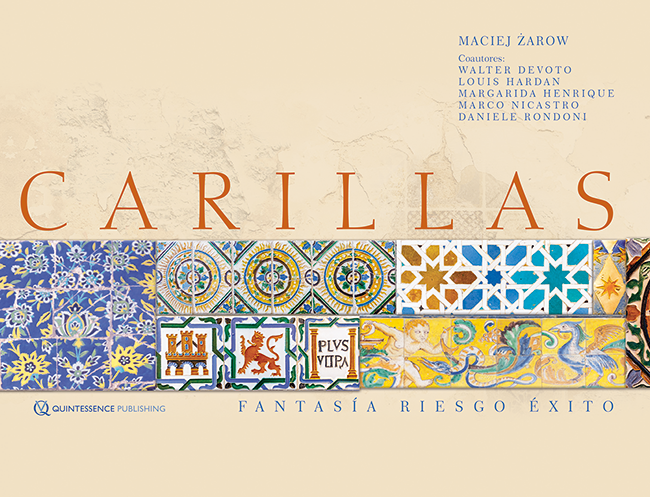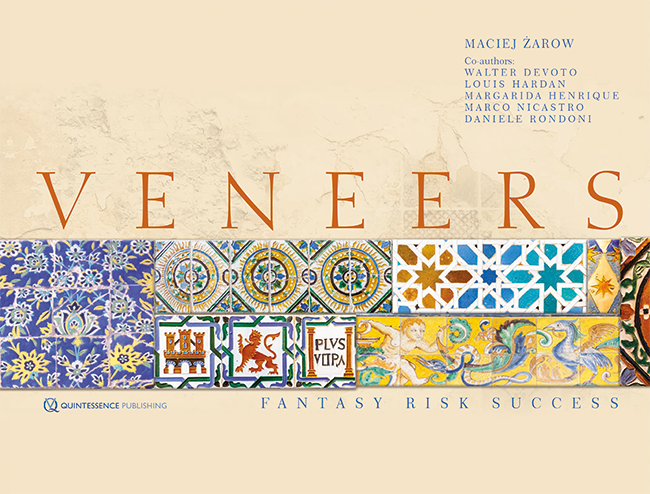QZ - Quintessenz Zahntechnik, 2/2021
Exzellente Dentale ÄsthetikSeiten: 117-118, Sprache: DeutschRondoni, Daniele / Devoto, ValterInternational Journal of Esthetic Dentistry (EN), 4/2018
PubMed-ID: 30302440Seiten: 516-537, Sprache: EnglischAmmannato, Riccardo / Rondoni, Daniele / Ferraris, FedericoFollowing the guidelines of the 'index technique' that were published in this journal in 2015, this article presents the 'digital index technique,' an updated no-prep restorative approach to the management of worn dentition. Patients with minimal, moderate, and severe hard tissue wear can be treated based on the application of minimally invasive or noninvasive adhesive composite restorations on posterior and anterior worn dentition. The technique allows for a purely additive treatment without sacrificing healthy hard tooth tissue. It follows the principles of biodentistry (maximum conservation of healthy tissue), and the reinforcing of residual dental structure. Depending on the severity of the enamel and dentin wear, the number of caries, and the size of the existing restorations, different treatment options can be applied to each tooth: direct and indirect partial restorations or full crowns. It is essential to diagnose and treat tooth surface loss in order to properly restore biomechanics, function, and esthetics by means of adhesive restorations. This article proposes that the update of the index technique through the digital workflow is a fast and conservative approach for the planning and management of a full-mouth adhesive restoration in all cases of light, moderate, and severe worn dentition. The technique is based on a 'copy-and-paste' guided approach, stamping composite resin directly onto the tooth surface by means of a transparent index created from a full-mouth digital restorative wax-up, following an initially planned increase in occlusal vertical dimension (OVD) through an esthetic and functional analysis.
International Journal of Esthetic Dentistry (DE), 4/2018
Seiten: 462-484, Sprache: DeutschAmmannato, Riccardo / Rondoni, Daniele / Ferraris, FedericoAufbauend auf den Prinzipien der "Indextechnik", die die Autoren 2015 in dieser Zeitschrift publiziert haben, stellt der vorliegende Artikel die "digitale Indextechnik" vor: einen aktualisierten, restaurativen Non-prep-Ansatz für die Behandlung im Abnutzungsgebiss. Patienten mit minimaler, moderater oder schwerer Abnutzung der Zahnhartsubstanzen können mit minimal- oder noninvasiven Kompositrestaurationen auf abgenutzten Front- und Seitenzähnen rehabilitiert werden. Die Technik ist rein additiv, sodass keine gesunde Hartsubstanz geopfert werden muss. Sie folgt den Prinzipien der Bioökonomie (maximaler Erhalt gesunder Substanz) und der Verstärkung der Restsubstanz. Abhängig vom Schweregrad der Schmelz- und Dentinabnutzung, der Anzahl kariöser Läsionen und der Größe der vorhandenen Restaurationen kommen für jeden Zahn unterschiedliche Restaurationsformen infrage: direkte oder indirekte Teilrestaurationen oder Vollkronen. Dabei ist es wichtig, den Substanzverlust korrekt zu diagnostizieren und zu behandeln, um mithilfe adhäsiver Restaurationen die Biomechanik, Funktion und Ästhetik adäquat wiederherstellen zu können. Dieser Beitrag präsentiert einen zeitsparenden, konservativen Ansatz für die Planung und Durchführung adhäsiver Gesamtrehabilitation in allen Fällen von leicht, moderat oder stark abgenutzten Zähnen als Aktualisierung der Indextechnik durch Digitalisierung des Arbeitsablaufs. Die Technik funktioniert nach dem "Copy-and-paste"-Prinzip: Komposit wird mithilfe eines transparenten Schlüssels direkt auf die Zähne aufgeformt. Dieser Schlüssel wird von einem digitalen Full-mouth-Wax-up abgenommen. Dieses berücksichtigt bereits eine Erhöhung der okklusalen Vertikaldimension, die zu Beginn auf Grundlage einer Ästhetik- und Funktionsanalyse geplant wurde.





